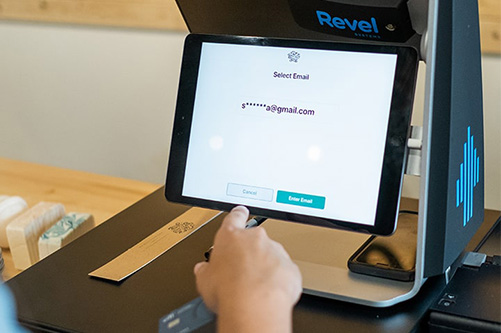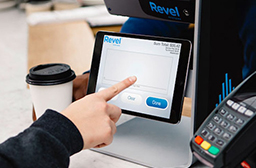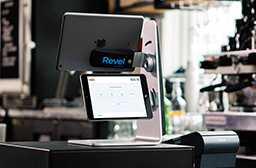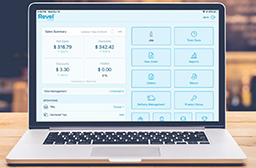Smart Start Loyalty Program Guide
A well-deployed loyalty program will help drive customer satisfaction and customer relationships as well as help increase revenue for merchants. This guide will help you!

Loyalty Program Basics
When carefully considered and thoughtfully deployed, a loyalty program can be a business game changer. Before you write off the idea or charge full steam ahead into a program of your own, review the steps in this guide for some tips and guidelines.
1. Establish an Objective

For a loyalty program to be successful, you must identify your objective and align it to your customer needs. Use your customers spending habits to identify where you have room for improvement.
Starting a new business? You won’t have the necessary data to know your customers purchase habits. However, with a new business, you have the opportunity to lay the groundwork to drive traffic back to the store from day one.
Increase Customer Purchase Frequency
- Method: Use the “stamp card” method where each visit earns a stamp (within Revel these are known as Visit Points)
- Common type: “Make 9 purchases and your 10th one is on us!”
- Benefit: Easy to deploy, rewards are easy to understand
- Drawbacks: Depending on how often your customers make a purchase, rewards may take too long to accrue and your customers may not stay interested
Pro tip: For new businesses, make the reward attainable so that new customers have more incentive to visit often early on. As the program matures, you can phase in higher purchase requirements.
Increase Average Transaction Size
- Method: Use the points method where every dollar is worth a point value
- Common type: “Earn 500 points and get a Buy One, Get One Free combo meal!”
- Benefit: Rewards customers for every dollar spent. Your best customers have incentive for larger rewards, while infrequent customers may still find value in spending a little bit more to receive a smaller reward
- Drawbacks: If reward levels aren’t clear, customers and employees may get confused, and your program will struggle to be successful
Pro tip: Make accrual values more than a $1 to 1 point exchange. Customers typically feel like they get more value when they earn higher point values for every dollar spent. (For example, 50 or 100 points per dollar.) Adjust your redemption rates accordingly.
Increase Specific Item Purchases
- Method: Use target items to drive spend in key product categories
- Common Type: “Buy 5 pizzas and get your next one free!”
- Benefit: Rewards customers for buying your most popular items and creates a reason to pick your establishment over competitors every time
- Drawbacks: Because customers only earn rewards on specific items, they might spend less in other categories
Pro tip: Start new customers with a bonus point with their first purchase to make the reward more attainable and get them hooked with the special attention.
2. Establish Program Rules
- Make earning points easy to understand.
- Make redeeming points easy to understand.
- Set a clear value maximum for rewards.
- Clarify how many rewards can be redeemed at any one time.
- Clarify whether or not rewards can be exchanged for the equivalent cash value.
- Are your employees eligible for rewards? If not, say so!
3. Identify Your Target Customers

For a new loyalty program, it is highly recommended to start with a pilot program with a small test group. This will allow you to adjust your loyalty program as you test out what makes the most sense for your business without worrying that you’ll have hundreds of customers whose expectations have already been set.
Existing Business
If you have a customer relationship manager (CRM) in place, you may want to invite your most loyal customers to participate. Not only will they benefit from a brand they already enjoy, they’ll likely be most willing to provide feedback about what would make them use the loyalty program more.
New Business / No CRM
Without existing customer data, you’ll need to identify the ideal pilot customer with a little more creativity. Try setting parameters such as transactions over a certain dollar amount or customers that purchase a higher than average number of items as ideal customers to invite.
4. Create a Communication Plan
You can have the best loyalty program of any business in your zip code. But if you don’t communicate it well, the people that you need to make it successful may never find out about it. Developing a communication strategy will help you train your team and ensure that your target customers are aware and engaged.
Training Your Team
Your team will be vital to the success of your new loyalty program. As you train them the functional aspects of how to work the loyalty program within your POS platform, you should also provide a pocket training guide as a support tool.
Consider the following:
- Program Details (rewards/ limitations)
- Target Customers for Pilot
- Talking Points for Engaging Customers
- Steps to Sign Customers Up
- Employee Expectations and Incentives
Informing Your Customers
During your pilot program, you’ll want to control communication as best as possible so that you can achieve the desired outcome as closely as possible. Email is probably the best strategy for communication as you can deliver it directly to your customers. However, some customers aren’t thrilled with handing out their email, so utilizing a business card printing service to create a branded wallet card outlining the program.
- Make customers feel special in being selected to participate
- Communicate the rewards available and how to achieve them
- Communicate any restrictions early, so they’re not surprised
- Include their rewards number, especially if you’re not relying on phone numbers

5. Establish SMART Goals
If you’ve ever heard the adage “you can’t manage what you don’t measure,” you should know that it can (and should!) absolutely be applied to your new loyalty program. Once you establish your objective, your rules, and your target customers, it’s time to set goals so you can measure your success!
SMART goals are especially helpful in tracking program success as they’ll help you ensure that they are meaningful. Be realistic with your goals and understand that they will mature as your program matures.
- Specific: What is your objective? (see Step One)
- Measurable: What is the desired outcome of your objective within the time constraint?
- Achievable: What specifically do you hope to learn about your customers to make the program successful?
- Results-Focused: What is the necessary process you will need to implement to get the desired outcome?
- Time-Bound: What is your first milestone for assessment? (How long will you pilot your program?)
An example of a SMART goal might be:
By November 1, I will have 100 target customers active in my pilot program and will increase average transaction size by $1 within this group compared to the customers not in my pilot program by providing the right rewards to encourage larger purchases.
Final Thoughts on Loyalty Programs
Don’t be afraid to make mistakes during your pilot program. Again, it’s much easier to adjust your program with a smaller test group than overhaul a fully rolled out program.
Loyalty programs are not a replacement for service! Your program should complement the environment that you’ve created for your customers and be a welcome extension of your brand that rewards an ongoing relationship.



